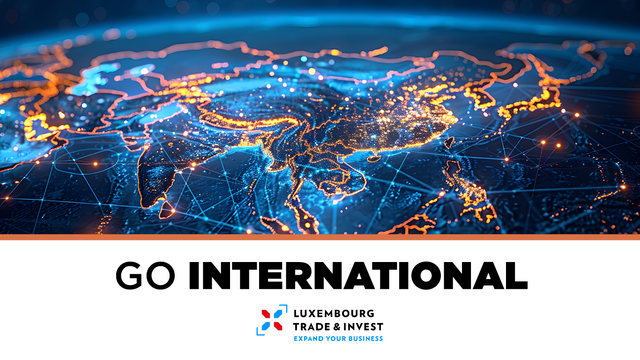
Chapters
The huge delta region formed at the confluence of the Ganges and Brahmaputra River systems - now referred to as Bangladesh - was a loosely incorporated outpost of various empires centered on the Gangetic plain for much of the first millennium A.D. Muslim conversions and settlement in the region began in the 10th century, primarily from Arab and Persian traders and preachers. Europeans established trading posts in the area in the 16th century. Eventually the area known as Bengal, primarily Hindu in the western section and mostly Muslim in the eastern half, became part of British India. Partition in 1947 resulted in an eastern wing of Pakistan in the Muslim-majority area, which became East Pakistan. Calls for greater autonomy and animosity between the eastern and western wings of Pakistan led to a Bengali independence movement. That movement, led by the Awami League (AL) and supported by India, won the independence war for Bangladesh in 1971.The post-independence AL government faced daunting challenges and in 1975 was overthrown by the military, triggering a series of military coups that resulted in a military-backed government and subsequent creation of the Bangladesh Nationalist Party (BNP) in 1978. That government also ended in a coup in 1981, followed by military-backed rule until democratic elections occurred in 1991. The BNP and AL alternated in power between 1991 and 2013, with the exception of a military-backed, emergency caretaker regime that suspended parliamentary elections planned for January 2007 in an effort to reform the political system and root out corruption. That government returned the country to fully democratic rule in December 2008 with the election of the AL and Prime Minister Sheikh HASINA. In January 2014, the incumbent AL won the national election by an overwhelming majority after the BNP boycotted, extending HASINA's term as prime minister. With the help of international development assistance, Bangladesh has reduced the poverty rate from over half of the population to less than a third, achieved Millennium Development Goals for maternal and child health, and made great progress in food security since independence. The economy has grown at an annual average of about 6% over the last two decades and the country reached World Bank lower-middle income status in 2015.
Key indicators
- Area
- 148,460 km2
- Population
- 164,098,818 (July 2021 est.)
- Government type
- parliamentary republic
- Languages
- Bangla 98.8% (official, also known as Bengali), other 1.2% (2011 est.)
- GDP
- $324.239 billion (2020 est.)
- Growth rate
- 2.4% (2020 est.)
- HDI
- 133
- Capital
- Dhaka
Macroeconomic indicators
Bangladesh's economy has grown roughly 6% per year since 2005 despite prolonged periods of political instability, poor infrastructure, endemic corruption, insufficient power supplies, and slow implementation of economic reforms. Although more than half of GDP is generated through the services sector, almost half of Bangladeshis are employed in the agriculture sector, with rice as the single-most-important product.
Garment exports, the backbone of Bangladesh's industrial sector, accounted for more than 80% of total exports and surpassed $28 billion in FY 2016-17. The sector continues to grow despite the need for improvements in factory safety conditions and workers’ rights to avert further high-profile accidents that killed more than 1,000 workers in 2012 and 2013. In FY 2016-17, steady export growth in the garment sector, combined with $13 billion in remittances from overseas Bangladeshis, contributed to Bangladesh's rising foreign exchange reserves.
The recent influx of over 700,000 additional refugees from Burma will place pressure on the Bangladeshi government’s budget and the country’s rice supplies, which declined in 2017 in part because of record flooding. Recent improvements to energy infrastructure, including the start of liquefied natural gas imports in 2018, represent a major step forward in resolving a key growth bottleneck.
Source: The CIA World Factbook - Economic overview
IMF Statistics:
| Subject descriptor | 2023 | 2024 | 2025 | 2026 | 2027 |
|---|---|---|---|---|---|
|
All Items, Consumer price index (CPI), Period average, percent change Percent (Units) |
9.016 |
9.73 |
10.03 |
8.75 |
5.48 |
|
Current account balance (credit less debit), Percent of GDP Percent (Units) |
-2.576 |
-1.446 |
0.031 |
-0.881 |
-1.209 |
|
Current account balance (credit less debit), US dollar US dollar (Billions) |
-11.633 |
-6.512 |
0.149 |
-4.573 |
-6.654 |
|
Exports of goods and services, Volume, Free on board (FOB), Percent change Percent (Units) |
-11.363 |
-7.568 |
6.803 |
22.542 |
14.849 |
|
Gross domestic product (GDP), Constant prices, Percent change Percent (Units) |
5.775 |
4.223 |
3.76 |
4.89 |
5.69 |
|
Gross domestic product (GDP), Current prices, Per capita, US dollar US dollar (Units) |
2651.738 |
2618.677 |
2734.098 |
2960.203 |
3107.714 |
|
Gross domestic product (GDP), Current prices, US dollar US dollar (Billions) |
451.534 |
450.461 |
475.011 |
519.288 |
550.283 |
|
Imports of goods and services, Volume, Cost insurance freight (CIF), Percent change Percent (Units) |
-12.14 |
-10.133 |
4.895 |
20.88 |
13.576 |
Source: IMF Statistics - Bangladesh
Relationships with Luxembourg
Existing conventions and agreements
Non double taxation agreement
In order to promote international economic and financial relations in the interest of the Grand Duchy of Luxembourg, the Luxembourg government negotiates bilateral agreements for the avoidance of double taxation and prevent fiscal evasion with respect to Taxes on Income and on fortune with third countries.
None
Air Services agreement
None
Further information
Foreign Trade
The Statec Foreign Trade statistics provide information on the trade of goods - by product and by country. This information is collected respectively through the INTRASTAT declaration and on the basis of customs documents.
You can see the statistics on the website of the Statec.
Contact points in Bangladesh
Honorary Consul
Honorary Consul with jurisdiction over Bangladesh: Ms Nasreen ZAMIR
Road 11A House 50/1
Apartment - E (2nd floor)
Dhanmondi R/A
1209 Dhaka
Bangladesh
Tel.: (+8802) 819 19 87
Mobile: (+8801) 819 228 100
E-Mail: dhaka@consul-hon.lu
Embassy of the Grand Duchy of Luxembourg in India
Ambassador with residence in New Delhi: H.E. Mr Jean-Claude KUGENER
Embassy of the Grand Duche de Luxembourg in New Delhi
84, Jor Bagh
New Delhi – 110003
India
Tel.: (+91-11) 49 98 66 00
Fax: (+91-11) 41 52 52 01
E-Mail: newdelhi.amb@mae.etat.lu
Website: newdelhi.mae.lu
Source: Ministry of Foreign Affairs of Luxembourg
Country risk as defined by Office du Ducroire for Bangladesh
Ducroire is the only credit insurer covering open account deals in over 200 countries. A rating on a scale from 1 to 7 shows the intensity of the political risk. Category 1 comprises countries with the lowest political risk and category 7 countries with the highest. Macroeconomics experts also assess the repayment climate for all buyers in a country.
Link: Ducroire Office - Country Risk for Bangladesh



